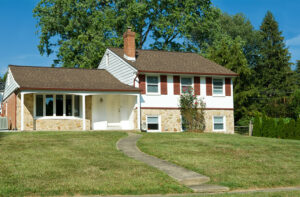Finding Your Perfect Neighborhood for Your New Home
- September 5, 2024
- 1:56 am
Choosing the perfect neighborhood can make all the difference when buying a new home. For first-time home buyers, young families, and urban professionals, finding that ideal spot isn’t just about aesthetics or convenience—it’s about securing a place where your life can thrive. Understanding what to seek in a neighborhood is key when house hunting. With practical guidance from BG & Associates, we can assist you in making an informed decision.Key Factors to Consider
Safety and Crime Rates
Safety is one of the most critical aspects to consider when buying a home. Researching crime rates will give you a clearer picture of how safe a neighborhood is. Look for areas with low crime statistics and active community policing. Websites like NeighborhoodScout and CrimeReports provide detailed data on crime rates, helping you evaluate the safety of various neighborhoods.
Additionally, consider the presence of neighborhood watch programs or community policing. These initiatives often lead to lower crime rates and a stronger sense of community. Visiting the area at different times of the day can also give you a better understanding of its safety.
Lastly, don’t underestimate the power of talking to locals. Engaging with current residents can provide firsthand insights into the safety and overall vibe of the neighborhood. Their experiences and observations can be invaluable in your decision-making process.
Proximity to Work, Schools, and Services
Commute times and accessibility to essential services play a significant role in your day-to-day convenience. Consider neighborhoods that offer easy access to your workplace, whether through public transport or major highways. Reducing your daily commute can significantly improve your quality of life.
For families, proximity to reputable schools is of the utmost importance. Research the top-rated schools in potential neighborhoods and consider the distance from your prospective home. Websites like GreatSchools provide ratings and reviews of schools nationwide, helping you identify the best options for your children.
Additionally, think about the availability of essential services such as hospitals, grocery stores, and recreational facilities. Having these amenities nearby not only adds convenience but also contributes to a higher quality of life. A neighborhood that offers a balanced mix of residential and commercial areas can be particularly appealing.
Quality of Schools
The quality of local schools is a top priority for families with children. Excellent schools can enhance your child’s education and future prospects. Research school rankings and performance metrics to get a sense of the educational opportunities available in potential neighborhoods.
Look beyond academic performance and consider factors such as extracurricular activities, student-teacher ratios, and parent reviews. Visiting schools and meeting with principals or teachers can provide additional insights into the learning environment and community involvement.
Remember, even if you don’t have school-age children, the quality of local schools can impact property values and the overall desirability of a neighborhood. High-performing schools often attract families, contributing to a stable and vibrant community.
Community Amenities
Community amenities can significantly enhance your lifestyle and sense of belonging. Look for neighborhoods that offer parks, recreational facilities, and cultural attractions. Green spaces and playgrounds provide opportunities for outdoor activities and social interactions, especially for families with children.
Restaurants, coffee shops, and shopping centers add convenience and vibrancy to a neighborhood. Consider areas with a variety of dining and entertainment options to suit your preferences. Walkability is another important factor—neighborhoods with pedestrian-friendly streets encourage a more active and engaged lifestyle.
Community centers and local events can also foster a strong sense of community. These amenities create opportunities for residents to connect, participate in activities, and build lasting relationships with their neighbors.
Property Values and the Local Economy
Understanding property values and the local economy is crucial for making a sound investment. Research the historical trends in property values within potential neighborhoods. Areas with consistent or rising property values indicate a stable and desirable market.
Consider the economic health of the region as well. Local job opportunities, businesses, and infrastructure development can impact the long-term viability of a neighborhood. A thriving local economy often translates to better services, amenities, and overall quality of life.
It’s also wise to consult with a real estate agent who has expertise in the area. They can provide valuable insights into market trends, property values, and future projections. Their knowledge can help you make an informed decision and maximize your investment potential.
Future Development and Infrastructure
Future development and infrastructure projects can significantly influence the desirability and value of a neighborhood. Research any planned developments, such as new schools, parks, shopping centers, or transportation upgrades. These projects can enhance the convenience and attractiveness of an area.
Conversely, be mindful of potential drawbacks, such as increased traffic or construction noise. Understanding the scope and timeline of planned developments can help you anticipate and mitigate any potential disruptions.
Engage with local planning departments or community organizations to stay informed about upcoming projects. Being proactive in your research can ensure that you select a neighborhood that aligns with your long-term goals and lifestyle preferences.
Tips for Researching Neighborhoods
Online Tools and Resources
Leverage online tools and resources to gather comprehensive information about potential neighborhoods. Websites like Zillow, Trulia, and Realtor.com offer detailed data on property listings, neighborhood demographics, and local amenities. These platforms also provide reviews and ratings from current residents, giving you a well-rounded perspective.
Additionally, explore neighborhood-specific forums and social media groups. These online communities often share valuable insights, recommendations, and firsthand experiences. Engaging with these platforms can help you gain a deeper understanding of the neighborhood dynamics and culture.
Don’t forget to utilize mapping tools like Google Maps. These tools allow you to virtually explore neighborhoods, assess walkability, and identify nearby amenities. Street View features provide a visual representation of the area, helping you get a feel for the neighborhood from the comfort of your home.
Visiting Potential Neighborhoods
While online research is valuable, nothing beats visiting potential neighborhoods in person. Schedule visits at different times of the day to observe the area’s ambiance and activity levels. Pay attention to factors such as noise levels, traffic patterns, and overall cleanliness.
Take note of the neighborhood’s infrastructure, including road conditions, sidewalks, and public transportation options. Walk or drive around the area to get a sense of its layout and accessibility. Visiting local businesses, parks, and community centers can also give you a better understanding of the neighborhood’s offerings.
Engage with local residents during your visits. Strike up conversations with neighbors and ask about their experiences living in the area. Their insights can provide a more authentic perspective on the neighborhood’s strengths and challenges.
Talking to Locals and Real Estate Agents
Talking to locals and real estate agents can provide invaluable insights when researching neighborhoods. Locals can offer firsthand accounts of their experiences, highlighting both the positives and potential drawbacks of the area. Ask about the community spirit, local events, and any issues they may have encountered.
Real estate agents, on the other hand, possess expert knowledge of the housing market and neighborhood trends. They can provide detailed information on property values, market conditions, and future developments. Working with a reputable real estate agent who understands your needs can significantly streamline your home-buying process.
Consider attending local open houses or community events. These occasions provide opportunities to meet residents, real estate professionals, and get a feel for the neighborhood’s overall vibe. Building connections with locals and agents can enhance your understanding and confidence in your decision-making process.
Finding Your Perfect Neighborhood for Your New Home
Choosing the right neighborhood is a crucial aspect of the home-buying process. Thorough research and consideration of key factors can significantly enhance your overall experience and satisfaction with your new home. By prioritizing safety, proximity to essential services, quality schools, community amenities, property values, and future developments, you can make an informed decision that aligns with your lifestyle and goals.
At BG & Associates, we understand the importance of finding the perfect neighborhood. Our team of agents are here to guide you through the process, offering personalized advice and support every step of the way. Contact us today to start your home-buying journey and discover the ideal neighborhood for your new home.
Related Real Estate Articles






